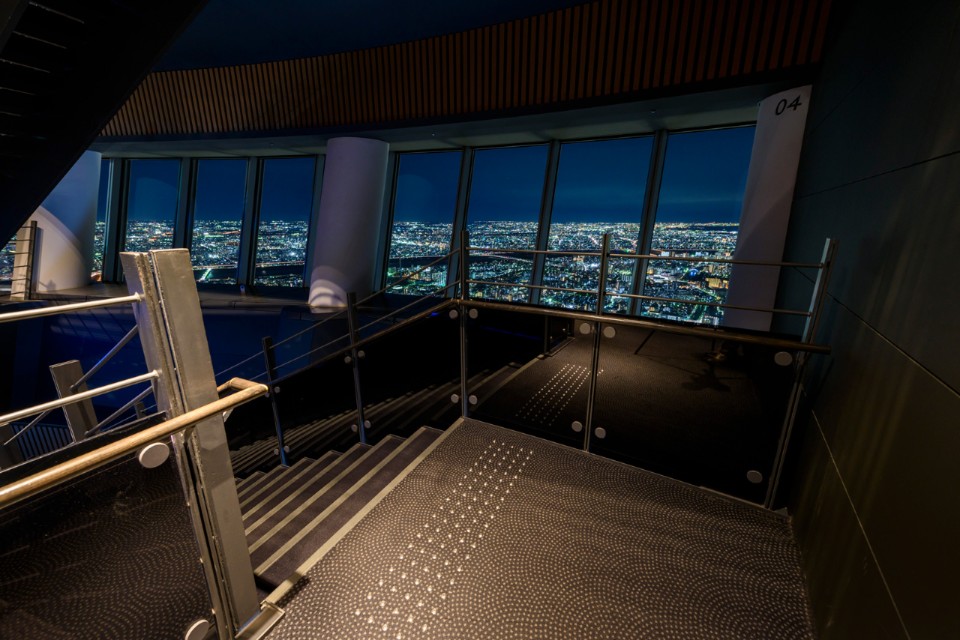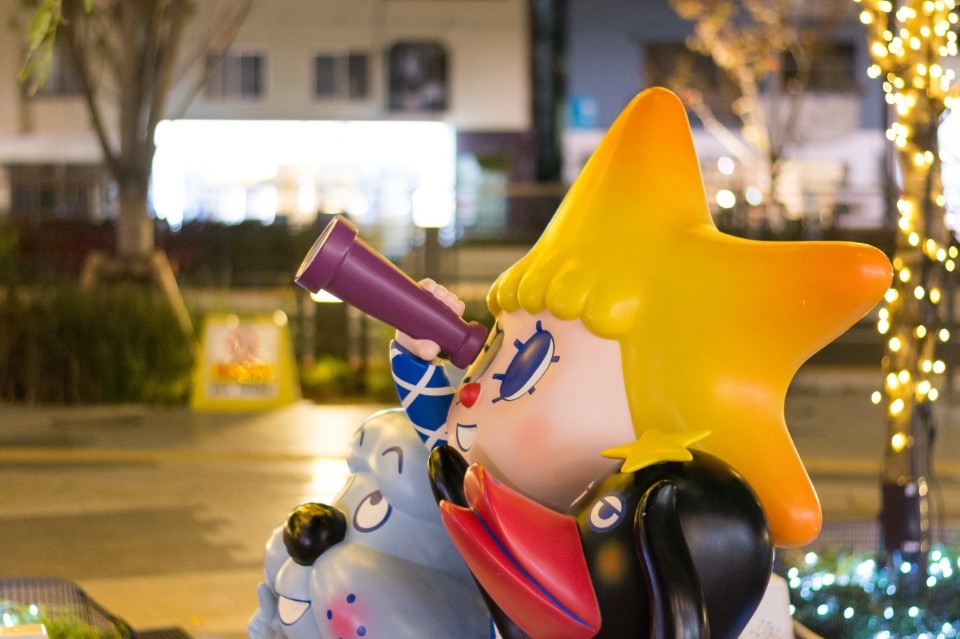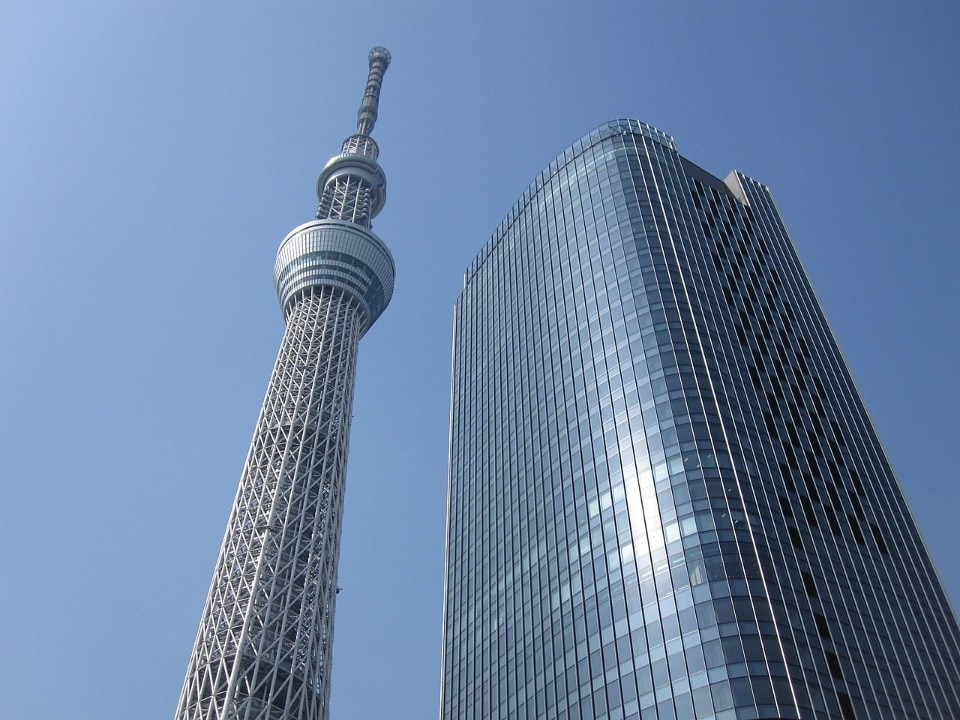Tokyo Skytree is the tallest tower in the world - as well as being the symbol of the capital - and the second tallest structure after the Burj Khalifa in Dubai. With a height of 634 meters, the building was designed by engineering and architecture firm Nikken Sekkei, with the collaboration of Tadao Ando and sculptor Kiichi Sumikawa. Located in Sumida, Tokyo, near the Asakusa district, the tower is 634 meters high for a specific reason: Musashi, the ancient region where it is located, is also the pronunciation of 634 written in ancient Japanese numbers - mu-sa-shi. Commissioned by the Tobu Railway Corporation and various terrestrial broadcasters headed by NHK, Tokyo Skytree is a centre for radio and television broadcasting in the country and is also used as a panoramic observatory with two observation decks over the city.

Tokyo Skytree is divided into three sections: Tokyo Solamachi, the base, Tembo Deck and Tembo Gallery. Tokyo Solamachi includes the largest shopping mall in Tokyo with about 300 shops, the ticket office, an information point, The Skytree Shop for souvenirs and a contemporary art exhibition, Super Craft Tree. Also included are the Sumida aquarium and the Tenku planetarium. Through a panoramic elevator, the fastest in Japan, you can reach 340 meters in about 50 seconds: the Tembo Shuttle, this is its name, takes visitors to the Tembo Deck, where there is a bar and a panoramic area with glass floor; a few floors higher, there is the tower restaurant, the Musashi Sky, which offers French-Japanese fusion cuisine, and the observatory on the city. The Tembo Gallery consists of a 110-meter-long walkway that runs in a spiral from floor 445 to floor 450 and from which you can see Mount Fuji and the entire structure. The top floor is the most suggestive, characterized by soft lights and a relaxation area.

The structure is made up of a triangular section base with 68 metres per side, which becomes circular as it proceeds upwards, obtaining an optical torsion effect. The two decks, with their circular shape, allow a 360-degree view of the city. At the forefront of engineering, the tower combines tradition: the curvatures of the triangular part at the base are reminiscent of the Japanese sword, while the shapes above are inspired by the soft, circular shapes of the pillars of the Horyuji temple in Kyoto dating back to the Nara period (710-94). With the aim of preventing earthquakes, the earthquake-proof structure uses another element of traditional architecture: the shinbashira, the central pillar of the pagoda that was used to absorb shocks and support these wooden buildings. Built here in reinforced concrete, the 375-metre cylinder performs the same function: anchored to the structure in the first 125 meters, it then remains free to swing during the horizontal tremors of an earthquake at a frequency different from that of the building, bringing it to stability.

A four-year design process that saw 40 tower models following one another before arriving at the final version. The structure is made of steel and reinforced concrete, while the grid that surrounds the structure is painted with the color “White Skytree”, based on the traditional bluish white aijiro. During the night, the building is illuminated with colors related to the Edo period (1603-1868): iki blue, a symbol of purity of spirit, and miyabi lavender, which stands for elegance.

Built in 3 years and 8 months and employing 585,000 people, the tower took the place of Tokyo Tower, the 333-meter-high broadcasting tower completed in 1958, but no longer performed its function due to the tall skyscrapers scattered around. The Tokyo Skytree was inaugurated on May 22, 2012, a few months late due to the 2011 earthquake. 220,000 people attended the inauguration despite the rain, staying outdoors for a week to visit the building that was going to become the symbol of the city and change its skyline. 1.6 million people, according to Tobu, visited the building in the first week. The Tokyo Skytree also boasts a mascot called Sorakara-chan, “daughter of sky”.
Opening picture: Tokyo Skytree and Tokyo Skytree East Tower. Author Reggaeman. Source Wikipedia


